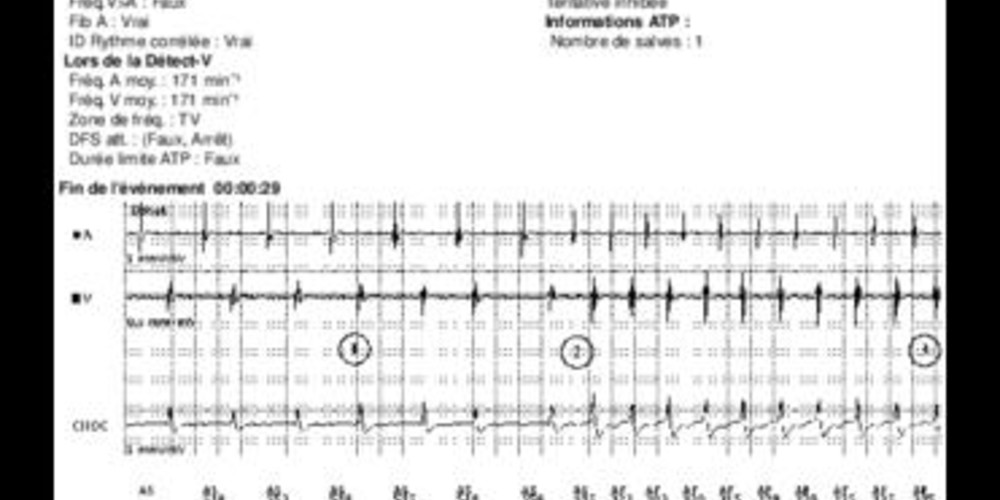Dual chamber discrimination, atrial undersensing and inappropriate therapies
Tracing
Manufacturer Boston Scientific
Device ICD
N° 10
Patient
This 65-year-old man presenting with hypertrophic cardiomyopathy underwent implantation of a Teligen dual chamber defibrillator after an episode of aborted sudden cardiac death.

Graph and trace
- sinus tachycardia with 1:1 atrioventricular ratio;
- atrial extrasystole and onset of a probable atrial tachycardia with 1:1 conduction. Ventricles detected in the VT zone;
- 8 out of 10 criterion fulfilled;
- at the end of Duration, diagnosis of SVT based on stable rhythm, AFib and high correlation between morphology during tachycardia and morphology of reference EGM; therapy withheld;
- 6 out of 10 criterion not fulfilled;
- detection of another sustained episode (8 out of 10 criterion, then Duration with 6 out of 10 criterion fulfilled). Identical diagnosis of SVT with stable ventricular rhythm and concordant vectors; therapy withheld;
- continuation of cycle-by-cycle analysis;
- on this cycle, the criterion of correlation was no longer fulfilled. The analysis reveals <3 out of 10 cycles with >94% correlation (a non-programmable threshold with this type of device), despite minimal variations in the EGM morphology on the high-voltage channel. A dual tachycardia was suspected (SVT + stable rhythm + non-correlated vectors à probable AFib + VT). The decision to treat was made;
- burst of ATP;
- persistence of atrial tachycardia, though the ventricular rate slowed slightly and fell below the VT zone.
Other articles that may be of interest to you







This episode of atrial tachycardia was initially accurately discriminated by the device. In a second stage, the vectors analysis favored VT (low correlation) and the device delivered a burst of ATP. This tracing raises the issue of the programmed threshold that determined the correlation. With the new devices, the threshold is now programmable. The nominal value is not usually modified as a first intention. On the other hand when, as in this patient’s case, this setting is misled, it would be advantageous to lower the programmed percentage (for example from 94 to 88%) to lower the device’s sensitivity and especially to increase its specificity.